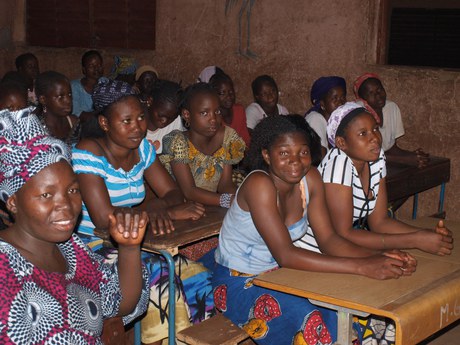
April 2016 - Topic of the month: Women are being left behind!
aidsfocus.ch - Guaranteeing their rights and empowering women and girls affected by or at risk of HIV is key to achieving sustainable development goal 3.3 “ending AIDS as an epidemic by 2030”.
Since the start of the HIV epidemic, women have been at a much higher risk of contracting HIV than men. More than half the people living with HIV are women; AIDS is the leading cause of death among women of reproductive age worldwide. It is also the leading cause of death among adolescents in Africa. According to the UNAIDS Gap Report, 7,000 girls and young women are infected with HIV per week and women contract HIV five to seven years earlier than men. In sub-Saharan Africa, young women and adolescent girls are nearly three times as likely as men of the same age group to be living with HIV.

Women and girls are repeatedly subjected to various forms of discrimination. This is most prevalent among female sex workers and transgender women, women with disabilities and female migrants. Other disparities are seen in the enrolment of girls in secondary school in sub-Saharan Africa, unequal access to economic opportunities and the lack of decision-making power experienced by women in the home and wider society. The ability to make choices affecting an individual's own life is a basic human right. All these factors make women, especially young women, more vulnerable to being affected by HIV and other life-threatening diseases.

The root causes must be addressed to change the course of the epidemic!
Young women's access to sexual and reproductive health information, commodities and services is limited by age of consent rules or being unmarried. Women often lack the opportunities to make healthy choices and are not in the position to negotiate the use of condoms. Paid and unprotected sex, often arising from poverty, a lack of economic opportunities or material goods, put young women at the risk of acquiring HIV. Violence, especially gender-based violence and intimate-partner violence, exacerbates the risk of HIV transmission. Gender inequality, gender-based violence and harmful traditional practices reinforce unequal power structures between men and women and limit women’s choices, opportunities and access to information, health and social services, education and employment.
Changing the course of the epidemic can only be achieved with interventions which go beyond the health sector. New approaches are required to address inequalities, poverty, sexual violence and the lack of education for young women.
The Global Fund to fight AIDS, Malaria and TB says: “We must invest in women”
Statistics on the vulnerability of women, especially young women, are alarming! Under the Global Fund's new strategic framework 2017 – 2022, scaling-up programmes to support women and girls, including programmes to advance sexual and reproductive health and rights is a strategic objective for the first time. Special emphasis will be placed on using grant-making processes to expand the role of interventions to improve gender equality. The Global Fund intends to work increasingly with partners to keep young women in school, to scale up prevention of mother-to-child transmission and other antenatal care services, to support integrated service delivery (of reproductive, maternal, neonatal, child and adolescent health (RMNCAH) services) and to invest in gender-responsive information systems and data management, and community initiatives and responses in order to better reach this population.
Watch the video “Creating Opportunity for Women” launched on this year's World Women’s Day:
Political leadership and commitment are more important than ever
On the one hand, we require global norms and standards such as the 2011 Political Declaration on HIV/AIDS: Intensifying our Efforts to Eliminate HIV/AIDS, the Convention on the Elimination of All Forms of Discrimination against Women (CEDAW), the Beijing Platform for Action and the SDGs. On the other hand, such standards only make sense if political leaders and all the relevant stakeholders commit to following them.
Civil society movements also have a duty to set demands and hold governments to account for their attitudes and promises.
The upcoming High Level Meeting in New York in June 2016 will not only adopt a new political declaration on HIV/AIDS but will also review what has been achieved in the past five years. At Medicus Mundi Switzerland, we will be closely following up on the discussion which emerges from this High Level Meeting.
(Photo: Housemaid in Mali / IAMANEH)
References
Gap Report (2014)
http://www.unaids.org/en/resources/campaigns/2014/2014gapreport/gapreport
Championing Gender Equality in the HIV Response: The experiences of five programme countries (2015)
Empower young women and adolescent girls: fast-tracking the end of the AIDS epidemic in Africa
http://www.unaids.org/sites/default/files/media_asset/JC2746_en.pdf
The Global Fund - Women & Girls
